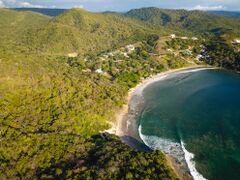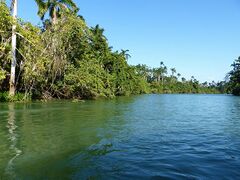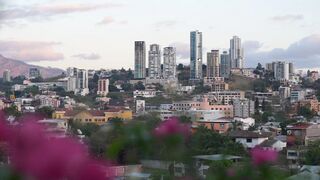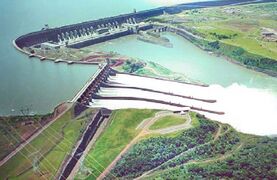Talk:Castadilla
Possible Almalore to salvage.
Ancient Era
The first accounts of the native inhabitants of Almadaria, the Vallosi, came from southerly-migrating Taineans after 500 BCE which later reported the complete disappearance of those very same Vallosi. It is suspected that the the Cronan-Vallosi hybrid peoples, originating from the north, and the later limited Polynesian advances northward, displaced or assimilated the Vallosi. Little remains of the Vallosi save for genetics and relics of their material culture-- notably shark pottery, which had been particularly advanced in the Gulf of Natosolea, utilizing high-fired ceramics and earthenware with ash glazes as early as 1700 BCE. Particular to Vallosi living in the Marcete Bay area were beads with a unique green glazing made presumably from tree sap.
The primary makeup of political life was small communities, often agricultural, harvesting rice and raíva, a starchy root vegetable. Most evidence of the Vallosi, and later Tainean peoples that merged shows that they were sophisticated fishermen, using nets and large canoes to bring in even deep-sea fish.
As Adonerii Latins swept across the continent from 650 BCE to 100 BCE in their concentrated and infrequent settlements, larger political formations began to emerge. These typically were no larger than the city-states they emulated, but the increased concentration of population was paired with the consolidation and exportation of culture and trade. Routes through the jungles and over the tropical grasslands enabled a flourish of Tainean and Latinized indigenous written languages, and commodities such as rice and textiles flowed in bulk, as well as a burgeoning spice trade.
By the end of the 2nd Century BCE the Cakai Kingdom, heavily inspired by Latin tradition and practice, had organized efficient and ubiquitous trade, becoming an economic heart of antiquity Almadaria. Its reach became so wide that Cakai ships travelled along the eastern coast of Vallos seeking new trade routes and partners.
With the coming millenium, increased instability in other parts of Vallos paired with resentful Tainean-majority polities led to a collapse of the community around the Cakai Kingdom, as its trade dwindled and influence waned.
First Vallosian Warring Period and Tainean Predominance
In the power vacuum left the Cakai Kingdom in 18 BCE, widespread conflict ensued between numerous city-states over the duration of centuries. Though the fighting was typically omnidirectional, there were many instances recorded by the historian Pendongeng of conflicts being fought along clear Tainean-Latin lines, such as the Pont Wars (130-154 CE). A consequence of this period of turmoil was the loss of earlier periods' artistic faculty, with most creative works-- beyond cheaper reproductions of the bona fide-- diminished to funerary works, such as unglazed earthenware pots.
However as the period of intense disorder grew to a close, many of the coastal societies that dwelled on what was once the seat of the Cakai Kingdom were shattered and reeling from the destruction to their lands; droves immigrated to the north and south, looking for stability and prosperity. The former lands of the Cakai Kingdom would never know the same level of prosperity and would remain in obscure villages for the following centuries.
As the region stabilized, it became clear that there was a new power to answer to; that of the Tainean Empire. The Tainean Empire grew from the conflict, at which it fortunately was stationed at the periphery, by having warfighting experience at navigating the dense inland jungles. While this staved off most adversaries, what truly caused the Empire's rise to power was its connections over Lake Remenau, which facilitated trade between other Vallosian polities. A strategy of piggybacking the newborn Lake Remenau slave trade and cunning pragmatism with their neighbors allowed the Tainean Empire to flourish. Traded frequently through the Empire was gold and spices, bringing the Empire into prominence. Even word of the Tainean Empire's prosperity reached the annals of the Caphirian Imperium, from which delegations were later cordially dispatched.
The Tainean Empire also saw social upheaval; the Taineans, traditionally found in subservient roles, found themselves elevated to merchant and administrators. Surprisingly, even with a Tainean-majority government, most records point towards the Tainean Kings having an even hand with its denizens of Latin, and even Polynesian, descent. This attitude, at the end of a bloody period in history, is claimed by many to have shaped the modern world by not splitting Vallos down racial lines.
Caphiric Undecimvirate

Soon, the calls of lesser kingdoms in Vallos became too much to ignore for the Caphirian First Imperium. Despite the relative calm of the region at that point in time, Caphirian Legions overwhelmed the recovering landscape of Vallos. In a series of decisive engagements, even the Tainean Empire was in full retreat, its crown and remainder of its forces fleeing south of the Gulf of Natsolea.
The Undecimvirate was not entirely Caphirian; though tributaries of the Imperium, the eleven kings that ruled over their respective fiefs all over Vallos were given a great degree of latitude over their agendas, so long as the tributes were on time (and as it often was, overloaded). Nevertheless, the Undecimvirate implemented a social order distinct and entirely exclusive to the former powers that reeled in the south, licking their wounds from the Caphirian invasion. While the Caphirian policies and organization revolutionized society in the north just as the Adonerii Latins had, indigenous and Tainean powers were left sidelined or left behind entirely.
Significant infighting, to a degree, became the status quo of the Undecimvirate. Each King, with their own armies and own agenda, fought petty wars to plunder one another. Among the most successful was the Portana Undecimvirate, whose pragmaticism and strategic decision-making helped to keep them always at the top of the tributaries.
Second Warring Period
With the waning of the Second Imperium came increased uncertainty among the Caphiric kings. As the threat of Caphirian intervention to enforce the terms of their agreement subsided, so did the unwritten rule of self-conquest among the Undecimvirate. When the Second Imperium finally collapsed in 1172 CE, Caphirian Vallos was already in a quagmire of internal conflicts, and the death knell of their administrators was the final straw.
With no divinely-inspired armada and legions behind their back, the Kings of the Undecimvirate quickly lost legitimacy, falling into a desperate civil war that mimicked the one happening on mainland Sarpedon. Adding to this was the rump Tainean Empire, in conjunction with other marginalized groups in face of the Undecimvirate, taking advantage of the instability and annihilating any hope of such a united Vallos, taking up around half the land area of the subcontinent, forming ever again.
The Neo-Tainean Empire, formed out of the altered territories and renewed by plundering the classical marble-and-limestone cities of a greater empire than them, quickly took back much of its former territory. With the pressure of Caphirian influence gone, many of the more southerly Polynesian states began to organize, forming prominent Kingdoms to oppose their Tainean-majority neighbor. Tainean kingdoms emerged in the north, too, taking inspiration from indigenous cultures, becoming the Manaqids and Lipipiqs, which persisted for hundreds of years until the end of the 2nd Warring States Period.
Many new kingdoms formed in the ashes of the Undecimvirate, made up of a completely new cultural force than what had existed in their place in 700 CE: the Cuasilatinos, their societies heavily imprinted on their Caphirian forebears.
Those that remained in the image of what had been were exiled and rapidly receding. The Kingdom of the Ossanids (1172-1530), and short-lived Latinic Kingdom attempted to hold onto the Caphirian stability they had once known, but found themselves embroiled on all sides with hostile native Vallsian kingdoms, trained in the same style of warfare as they, and eager to conquer those who had once represented power.
In the meantime, the power imbalance would soon stabilize; in the north, the Kingdom of Septemontes, the east, the Neo-Tainean Empire, and in the south, the increasingly organized and Polynesian kingdoms.
Free Kingdom Era
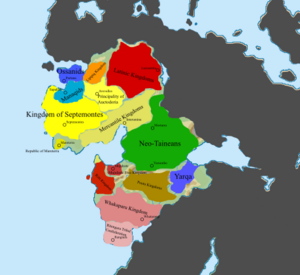
During this time, it became increasingly apparent that through a series of alliance-building, selective conquest, and upward progress recaptured from the Caphirian Undecimvirate, the Kingdom of Septemontes became a power in what would be northern Almadaria. The Kingdom, made up of Cuasilatinos, largely adopted the structure not of the Undecimvirate but of the Imperium ; an absolute power resting in the monarch while the Christian faith was enshrined as part and parcel of government. With its streamlined hierarchy, efficient government, and ambitious leaders, the Kingdom of Septemontes fostered a period of western Almadarian prosperity with its rebuilding and maintenance of durable limestone aggregate roads and beneficial relations and profitable trade agreements with its neighbors, such as the Principality of Auctodoria of which it was suzerain, or the city-state of Mareterra.
While the Neo-Taineans and the Cuasilatinos maintained an uneasy truce with a buffer zone between them, the Kingdom of Septemontes picked off its adversaries one by one. Beginning with the Manaqid Wars (1353), the Kingdom methodically conquered the Manaqids, culminating in the Battle of La Cancha (1354). The Treaty of Avevalles (1361) further reduced resistance to the gathering power of the Kingdom of Septemontes by promising non-interference to the closed Ossanid Kingdom. The expansionist Latinic Wars (1410-82 CE) reduced the holdover Latinic Kingdom to broken, shattered tribes. By 1400, the Latinic Kingdoms had become further weakend and divided than they were at the start of the century.
In the court of Septemontes, amidst Manaqid insurrections and other trivial matters of state, the King, or Rei, Fernando Olmedo III, inheriting the Kingdom from the nearly-150 year-long line of the Olmedian dynasty, set his eyes across the waters of the Gulf of Natosolea. The former Undecimvirate had already been well-plundered and its rulers established, but those that had escaped the clutches of the Caphirians were considerably weaker, less developed than the Cuasilatino societies that had formed. Rei Olmedo III sent the first surveyors across Vallos to document the south that the north had seemingly left untouched since the days of the Cakai Kingdom. However, his reign was devoted primarily to managing its subjects and muddling through the messy remains of first the Lipipiqs, then the Latinic Kingdoms.
Across Vallos, the absence of the Undecimvirate and its strict, necessarily vicious infighting became internalized. In time, policy and inter-Vallosian violence cultivated by incessant tributary conflict and two Warring Periods was directed both outwards for the first time and further inwards. The formation of Piratocracies essentially represented the first native Vallosian expression of foreign policy; the interception and self-enrichment off of another nation's trade. Meanwhile, as pirate kingdoms formed in the north and south of Vallos up to 1600 at their peak, it had a stifling effect on coastal civilizations across the board. For those left out of the pirate trade, it produced an opposite effect; inter-Vallosian trade through land routes were established, to circumvent the threat of pirate attacks as well as build up inland economies and urban centers, producing more pirate-resilient societies.
During this time, however hostile the interchange was between Vallos, Sarpedon, Levantia, then Crona, Catholicism spread south and became in some places the primary religion overnight. In 1566, Asunción Duque II (Or Asunción the Catholic) baptized themselves a Catholic and pressured subject and ally alike, although Christian, to convert. When the Kingdom of Oustec was founded in 1566 and quickly established itself as one of the foremost northern Vallosian powers, Catholicism found itself as having paved the way for close relations between Oustec and the Kingdom of Septemontes. The two were strange bedfellows, considering the thoroughly illegitimate basis of the Oustec crown, but the maritime power of Oustec I and the manpower and minerals of Septemontes made the two prosper together. The Congress of Lacusentia (1570) formalized relations between the two Kingdoms, and from then on their fates would be roughly linked.
Early Modern
The turn of the 14th century established the Kingdom of Septemontes as a major component of western Almadaria; the turn of the 16th century established it as a major power of Vallos. Bolstered by a close and bordering on parternalistic relationship with the Vagercatores, or Merchant Kingdoms, and itself under the maritime umbrella of the Oustec, the Kingdom of Septemontes traded along the western shores of Vallos, reaching even far enough to access the sophisticated luxury resources of mainland Sarpedon. Silver, limes and spices, and leathers from the burgeoning rancher culture forming in the Astol Plains were loaded onto indigenously-built trade ships, sent across the sea in exchange for luxury textiles, new crops, and ideas readily taken in by the advantage-seeking Kingdom of Septemontes. The dogma of the Kingdom was changed, and with the Catholic Church and increasing sophistication of the monarchy, the newly-coronated House of Duque seemingly embraced the example of the de Welutas. The Kingdom of Septemontes, under Asunción Duque I and Asunción Duque II, underwent reform to streamline royal authority within the Kingdom and amalgamate its constituents, including the Kingdom of Auctodoria, the Vagercatores, and more recent territorial additions.
Riding the boom in prosperity in the early half of the 1500s, the Kingdom of Septemontes set its sights to Vallos as a whole. Near-modern Oustecian ships loaned in exchange for Septemontes textiles and cattle bolstered the navy of the Kingdom, giving them an edge against what was perceived to be the most logical route for expansion; the Polynesians. The extent of the so-called 'Polynesian Kingdoms' as they were homogenously called, stretched south beyond the territory of the Neo-Tainean Empire and the Gulf of Natsolea which until that point had been the foremost barrier to invasion, and with the land also came cash crops, more mineral wealth, and labor (which beyond the economic benefit, also lay a reward in converting the heathens). The 'Polynesian Kingdoms' were primarily the Riiti Kingdom in the north, the Poutu Kingdoms in the east, and Whakaparu Kingdom in the southwest; the first came under attack in 1553, starting the Polynesian Wars (1553-1668). Unlike earlier conquests of Septemontes, the cultural and religious differences led to a drastically different result. The soldiery were not only warriors, but explorers and proponents of Catholicism; conversion and massacre went hand in hand. The Royal Army of Septemontes sent heavily armed raiders that easily overwhelmed their southern neighbors, weakened from lack of trade and the Septemontes advantage of gunpowder and horses, as a vanguard for the settlers, missionaries, and administrators that followed.
The relative success of the Polynesian Wars bolstered the image of the Kingdom of Septemontes, allowing Rei Asunción Duque II to incorporate the Neo-Tainean Empire under their tutelage through the Barrienda Compact of 1588 and expand their influence over Vallos subcontinent. Riding this wave of power and influence, the Reis of Septemontes rapidly involved themselves, mostly in conflicts, in the affairs of Vallos as a whole, ranging from interventions on behalf of the Kingdom of Oustec to participation in the Southern Route, often selling Polynesians conquered during war to depopulate and remove resistance to Septemontes settlement.
Meanwhile, many monarchs of the House of Duque chose to look inward. Against the backdrop of expansionism and prosperity, Catholicism became more of a driving force in Septemontes. In order to bridge the divide between the Tainean and ex-Latin populations, the Catholic Church of Almadaria in full support with the House of Duque sought to embrace the hybrid culture of the two living in Septemontes lands; this new force, compacted around the Church, became ‘cuasliatino’. The Decree of Asunción Duque I of 1538 made Latino-Tainean the language of the royal court and that of the land, though often pidgins between Latin and Tainean languages were used in day-to-day life. Developing in tandem, however, with the cultural programs and movements of Cuasilatino-ism and the ethnic alliance between Tainean and Latin was a more volatile racial supremacist ideology predicating itself on Cuasilatino– in this view, Cuasilatinos were bestowed the right to rule over the stretch of Undecimvirate-controlled Vallos (as there were no direct, ‘pure’ descendents of the Latin invaders), the evidence of this being the success of rapidly-unifying Septemontes over all other groups in Vallos with the rise of the pirate kingdoms. Moreover, the Rei of Septemontes, by the workings of the court, was not necessarily a privilege afforded to royal heritage but rather on ethnic grounds– hence the usage of common names in their rulers. This worked to further solidify the Kingdom by legitimizing itself not only on religious but racial grounds.
This is not to say that, despite the outgrouping of all others, that the ethnic alliance that fell under the umbrella ‘Cuasilatino’ was by any means on even ground. Rei Godofredo Velasquez (1619-1649) instituted a system of Herasure, or ‘Fairness’, which is to mean a system of preferentially appointing fair-skinned (typically those that fall more on the ‘Latin’ side of the Cuasilatino spectrum) denizens over their more Tainean counterparts. This policy, eventually turned de facto law of the land, extended towards even provincial administrators and bureaucrats, reserving most government positions for Latin-passing subjects. This pressed many Taineans, mixed Cuasilatinos, and long-since naturalized Polynesians to the bottom of the social hierarchy that extended from the royal gardens to agricultural settlements. This system of discrimination was especially prominent in the unification of the Neo-Tainean Empire, where many Neotaineans saw their lands seized and their status lower than even the Kingdom of Septemontes’ Taineans.
Oustec Entanglements
The positive relationship between the Kings of Oustec and the Reis of Septemontes was important to both, but it necessarily demanded compromise on both sides. Security on their southern and northern frontiers respectively was a mutual goal; in 1598 the Kingdom of Septemontes lended portions of its Royal Army to the capture and handoff of Arona. Once this was completed, and Septemontes looked beyond its Polynesian borderlands, the tax instituted by Oustec on their foreign policy became their agricultural support for their ally and involvement in their wars. In 1601, the Kingdom of Septemontes entered the long-running Levantine Resistance War (1598-1684), a low-intensity conflict against encroaching Burgundii groups on the side of the Kingdom of Oustec. Meanwhile,
Geography
-
Tropical grasslands of the Astol Plains
-
Western foothills of the Niscamanta mountain range
-
Meridional beach
-
View from the Castila River
-
Shot of Piedratorres from Communa 9
-
Dam #2 in the Remenau River Valley
Almadaria is situated with the Polynesian Sea to its west, and bordered by several freshwater bodies of water, such as Lake Remenau, which is shared between the borders of Almadaria and Castadilla. Almadaria has land borders with Arona, Vespera, Castadilla, and Takatta Loa, and shares maritime limits with Arona and Takatta Loa. Defining much of the central and southern topography of the nation is the Niscamanta Range to the east, enclosing the Remenau River Valley, and the milder Chapi Range to the south. The highest point is Cerro Vigorito, at 3,244 meters (10,643 ft) above sea level. The largest lake (entirely within national borders) is Lake Musgo, located in the Meridional region.
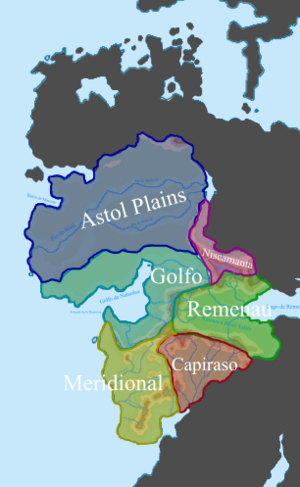
The Ministry of Environmental and Resource Concerns of Almadaria classified the nation as having six distinct natural regions: the northern tropical grasslands of the Astol Plains which it shares with Arona, the Golfo which forms itself around the Gulf of Natsolea, the Meridional region with dense tropical forests, the narrow highland Niscamanta region nestled in the east which is shared with Castadilla, the river delta region, historically contested with the southern Polynesian neighbors, of Capiraso, and the continental interior equivalent of Capiraso in Remenau.
The Astol is the tropical grassland surrounding and encompassed by the northern and southern Astol Rivers, which builds into highlands towards the Niscamanta Range. The Astol, combined with the Golfo, contains more than half of the Almadarian population. The Golfo region is formed around the Gulf of Natosolea, which is headed off by the commercially important Mareterra Strait.
Climate and environment
Almadaria broadly experiences a tropical climate, regardless of the time of year, though geographical nuances allows for a diverse number of range of climate zones. The Niscamanta Range presents a pronounced mountain/alpine climate, while the Golfo, Capiraso, and the Meridional regions are hot, humid tropical rainforests. The forested and riverine Remenau valley is a tropical savanna, receiving less rainfall on average than the rest of the country.
As it is just south of the equator, temperatures remain relatively constant year-round, with average highs of 28 degrees Celsius and average lows of 19 degrees Celsius. Generally, the distinguishing feature of the different natural regions is not the temperature but rainfall.
Colloquially, springtime and autumn do not functionally exist in Almadaria; instead, there is the dry season, verano (summer), and the wet season, called invierno (winter). The amount of rain defines the seasons; these seasons tend to coincide with typhoon season in the Kindred and Tainean Seas. The wet season, spanning from May to December, can see an average precipitation of 340 mm; the dry season can see as few as 6 millimeters. The Golfo and Meridional regions receive the most rainfall on an annual basis.
Demographics
What kind of people live in your country? Bad ones
Ethnicity
Self-reported ethnic origin in the XXX (20XX)
What ethnic groups make up your country?
Language
What language or languages do your country's people use? Are there any previously used languages no longer common? Are these languages native to your country or shared with another?
Religion
Economy
Almadaria has an emerging, upper middle-income mixed-market economy, ranked as the 17th largest economy, or 19th largest by GDPPC. The Almadarian economy is highly developed, with an equally as high standard of living. This is helped in part by policy-minded government intervention by the Ministries of Trade and Ministry of Environmental and Resource Concerns. As well, due to the government's policy of courting foreign investment, the Almadarian currency sports a high PPP; since late 20th century, the Almadarian Valverde has been a competitive currency on the foreign exchange, hovering near or around the value of a Levantine Taler. Foreign investment is partly incentivized and partly kept under control through the International Trade Interest Regime (ITIR/RICI); this policy establishes laissez-faire geographic zones for foreign companies to operate, with the added benefits of exemption from value-added taxes, among others. This makes it possible for domestic businesses to operate without strangulation from their foreign competition. Almadaria scores well on the Human Development Index, is known for its inventive and internationally competitive financial services and banking, which operate in cooperation with both the Almadarian government as well as having influences in the Vallosian Economic Association.
A proponent of economic liberalism from its foundation, Almadaria has formed a cornerstone and historical anchor of the economic heart of Vallos when its primary peers suffered from instability. Almadaria's (formerly the Kingdom of Septemontes) lasting economic centrality to Vallos and sweeping development occurred in the 18th and 19th centuries as a result of the country's role in the Southern Route, the cause of many historical controversies. In the modern era, Almadaria has been a founding member of the Vallosian Economic Association (VEA), as well as signatories to PROSPER Program and other international initiatives.
A major controversy in the calculation of economic wellness of Almadaria is the inclusion of the Department of Capiraso, a political department located in the larger Carrediaz/Karetia'asu region. This region has historically experienced significant political and criminal turmoil and additionally a low-intensity conflict since the mid-2020's, largely in the wake of the start of the Akanatoa War. This instability, despite the intervention of state forces, has significantly degraded the economic well-being of the area compared to the rest of Almadaria. Many voices in legislature have called for its exclusion from official statistics, and even censuses -- others have called for its exclusion from the nation as a whole.
Employment, Growth Rate, and Inflation
The LFPR (labor force participation rate) since 2010 for Almadaria has hovered around 83.2%, or a labor pool of approximately 40,600,000, largely in part due to early employment (the average Almadarian typically acquires a job around age 16) and an abundant minimal-labor job market which suits itself for longer life and later retirement. Since the economic recovery from the 2018 recession, unemployment has maintained consistent around 11%, contributed to by expansive government-funded social networks, including healthcare. Inflation has historically been a problem of the Almadarian economy, afflicting the nation periodically in the 20th Century, but increased financialization and government regulation have minimized the variation in value of the Valverde, limiting inflation by 3.55% every year. Growth in the public sector of the economy typically trails behind the normally-successful private sector, due to government focus and investment being prioritized there.
A very small fraction of the Almadarian labor force works in the primary (agriculture, resource extraction) sector, due to increased mechanization paired with increased reliance on imports; as of 2030, only 7.4%. A larger proportion (27.1%) serves in the secondary (manufacturing) sector, while the majority (65.5%) works in the tertiary sector, reflective of the developed Almadarian service economy. Moreover, despite the large proportion of the labor force in the primary and secondary sectors of the economy, more than 87% of the GDP comes from the tertiary sector.
Industries and Sectors
The services sector of the Almadarian economy is its strongest, led first and foremost by its financial services industry, as well as the telecommunications industry and information technology industry, followed closely by a mature retail industry and real estate market. Initially agricultural, Almadaria experienced a brief period of industrialization before rapidly financializing in the later period of the 20th Century. The core of the sudden shift towards financialization lies in the early origins of the Almadarian banking system in the Vagercatores, or the Merchant Kingdoms, that emerged after the fall of the Caphirian Undecimvirate, with the first bank in Almadaria founded in Interumina in 1549. After the Second Great War, the Edmundo Virgen Administration (1948-58) led the charge towards increased financialization of the economy in an attempt to sidestep increasing agricultural and mineral preponderance of Almadaria's neighbors and the developed and first-class manufacturing economies of the Burgoignac Equatorial Ostiecia. This way, necessary political and societal reforms that made up President Virgen's administrative platform could be funded without being dependent on mineral, energy, or up-till-then uncompetitive industries. It was during this time the CLN passed several banking secrecy laws in the 1950's, which began to attract futures contracts for the real mineral resources of Almadaria. The increased investment was then used to double down on financial infrastructure, beginning the so-called cycle of a 'runaway' financial economy while the government used the dividends for small, sophisticated projects.
Agriculture and Fishing
Mining
Energy
Manufacturing
Construction
Financial Services
The financial services economy collects the lion's share of domestic and foreign investment, growth, and policy focus. There are more than 411 distinct financial firms and cooperatives in Almadaria, from which come seven of the ten richest Almadarian citizens. The financial services come primarily in the form of banking in its commercial and investment forms, as well as financial exports, insurance, foreign exchange brokerage, as well as advising and analysis. Grupo Caballero, an Almadarian firm worth 34.6 billion USD, provides accounting services to international organizations such as the Vallosian Economic Association.
Telecommunications
Information Technology
Retail
Real Estate
Education
Research and Development
Public Sector
Transportation, public health and healthcare


